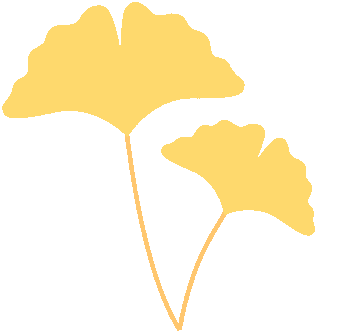
Click the blue text to follow us
When you catch a cold, can you distinguish whether it is a Wind-Cold or Wind-Heat cold?
What is the basis for differentiation? Is clear nasal discharge indicative of cold? Is yellow nasal discharge indicative of heat?
I have found that many people differentiate this way; as soon as they see clear nasal discharge, they assume it is a Wind-Cold cold. This often leads to incorrect medication.
Whenever I tell them that clear nasal discharge is not the only or primary factor for distinguishing between Wind-Cold and Wind-Heat colds, but merely a reference factor, they look confused and ask me, “Then how do we differentiate between Wind-Cold and Wind-Heat colds?”
Today, I will continue to share the diagnostic methods for Wind-Heat colds.
The most significant characteristic of a Wind-Heat cold is the presence of internal heat in the body, combined with a series of symptoms caused by the invasion of Wind-Heat evil.
Common symptoms of Wind-Heat colds include: mild chills, high fever, difficulty sweating, headache, cough, sticky or yellow phlegm, dry mouth and throat, sore throat, nasal congestion with yellow nasal discharge, thin white or thin yellow tongue coating, and a red tip of the tongue.
Mild chills
The Wind-Heat evil entering the body may also bring Wind-Cold, so mild cold sensitivity may occur, but it will not be as pronounced as in Wind-Cold colds. Therefore, it is mild chills, showing slight cold sensitivity.
High fever
High fever refers to a high temperature, which is one of the most typical manifestations of Wind-Heat colds.
It often presents as a high fever because the heat evil itself is hot, and when it enters the body, combined with the body’s own heat, the two heat evils clash with the righteous qi.
Body temperature can rise rapidly, especially in children, who can easily reach 39 or 40 degrees Celsius.
Difficulty sweating
This means that sweating occurs sometimes but not consistently, and it cannot be profuse and satisfying. Additionally, after sweating, the high fever does not subside, and the person may feel quite irritable, which is also one of the main symptoms of fever in Wind-Heat colds.
Headache
Wind-Cold colds can also cause headaches, but this pain is cold and painful, especially sensitive to wind, and worsens with exposure to wind.
However, the headache in Wind-Heat colds is characterized by a feeling of pressure, primarily due to blood heat. The body temperature rises rapidly, and the head has abundant blood vessels, which can become congested under high temperatures, leading to a sensation of pressure and heat pain.
Cough
The Wind-Heat evil, upon entering through the mouth and nose, first invades the lungs, which are delicate organs that are most susceptible to dry heat evils.
The dry heat evil obstructs the lung’s ability to disperse and descend, leading to coughing. This may be either a dry cough or a cough with yellow phlegm, which may also be thick and difficult to expel.
Dry mouth and throat
After the heat evil enters, it damages the body’s fluids. When the fluids are excessively consumed, symptoms of thirst and a desire to drink water arise.
Additionally, the Wind-Heat evil can scorch the lung collaterals, leading to symptoms of dry throat and sore throat.
Nasal congestion
This is similar to Wind-Cold colds, where the invasion of external evils causes lung qi to rise and become obstructed in the nasal area, resulting in nasal congestion in both Wind-Cold and Wind-Heat colds.
Nasal discharge
Cold typically results in clear nasal discharge, but heat often leads to yellow or thick nasal discharge.
Tongue coating
At the onset of a Wind-Heat cold, the tongue coating may be thin white or thin yellow, as the response of the tongue coating may lag behind.
Thus, even with the invasion of Wind-Heat evil, the tongue coating may still be thin white, but it can be confirmed that as the Wind-Heat cold worsens, the tongue coating will gradually become red, especially at the tip of the tongue.
The above are the main manifestations of Wind-Heat colds.
The key points for differentiation are: high fever, difficulty sweating with persistent fever, dry mouth and throat, headache with pressure, yellow nasal discharge, and a red tip of the tongue.
Treatment principles for Wind-Heat colds: use pungent-cool herbs to release the exterior.
Medicinal or food items that clear heat and disperse exterior evils should be used.
Recommended Chinese patent medicines:
1. In the early stages of Wind-Heat colds, when not too severe, Mulberry and Chrysanthemum Cold Tablets (Sang Ju Gan Mao Pian) can disperse Wind-Heat and also relieve cough.
2. If the heat is more severe, Yin Qiao Jie Du Pian can be used.
3. Other options include Shuang Huang Lian Oral Liquid, Huang Lian Shang Qing Wan, and Anti-Viral Oral Liquid, which are suitable for cases with significant heat symptoms.
For children, Children’s Re Shu Qing Granules and Children’s Gu Qiao Qing Re Granules can be used. If there is only fever without cough, Children’s Chai Gui Tui Re Granules can be used.
4. If the Wind-Heat cold has significant cold evil, meaning a cold-heat combination, both cold and heat are present, Fang Feng Tong Sheng Wan can be used, which is a Chinese patent medicine that resolves both exterior and interior.
5. If the Wind-Heat cold has persisted for several days, with alternating cold and heat symptoms, Xiao Chai Hu Granules can be used.
Recommended dietary therapy:
Chrysanthemum 6g, Honeysuckle 6g, Peppermint 6g, Fermented Soybean 10g, Bamboo Leaf 10g, Reed Root 10g, Lily Bulb 10g.
If cough is severe, add: 10g of Apricot Kernel (Xing Ren) crushed, 6g of Licorice (Gan Cao), 9g of Platycodon (Jie Geng).
If there is food stagnation, add: 9g of Hawthorn (Shan Zha), 9g of Chicken Inner Gold (Ji Nei Jin).
If there is excessive phlegm that is difficult to expel, add: 10g of Stir-fried Radish Seed (Lai Fu Zi), 6g of Bamboo Shavings (Zhu Ru).
If there is severe fever, add: 12g of Kudzu Root (Ge Gen), 12g of White Grass Root (Bai Mao Gen).
The main distinguishing points between Wind-Cold and Wind-Heat colds:
Wind-Cold cold: Heavy Wind-Cold (sensitive to cold and wind), mild fever, no sweating, no thirst, clear nasal discharge. Tongue coating is not red.
Wind-Heat cold: Severe fever, mild sensitivity to wind and cold. Sweating, yellow nasal discharge, red tip of the tongue.
The above are the key points for differentiation, dietary therapy, and selection of Chinese patent medicines.
Through this sharing, it is clear that nasal cold with runny nose and cough is not the key to differentiating between Wind-Cold and Wind-Heat colds; both types of colds can have these symptoms.
In addition to Wind-Cold and Wind-Heat colds, there are also common cold-heat combination colds, which have both cold and heat; for these, Qing Re Gan Mao Granules and Fang Feng Tong Sheng Wan are often selected.
Moreover, summer colds are often caused by summer dampness. Summer dampness can be divided into cold dampness and summer heat; cold dampness colds are primarily caused by cold and heavy dampness, while summer heat colds are primarily caused by summer heat evil and damp evil.
For summer dampness colds, use Huo Xiang Zheng Qi Water or Wu Shi Tea; for summer heat colds, Qing Shu Jie Du Granules or Bao Ji Wan can be selected.

Learn dietary therapy, scan the WeChat, and note “join group” to enter the TCM dietary therapy study group. We share knowledge on dietary therapy for children and women at irregular times every day. Welcome to join the group and exchange learning with mothers, helping children get sick less and use less medication. Raising children is not easy; let’s have companions!

Ye Kangli: Dietary therapy practitioner, public nutritionist, Level 1 health manager. 10 years of experience in nutrition and health. Specializes in using food for treatment and health care, focusing on dietary therapy for women and children.

